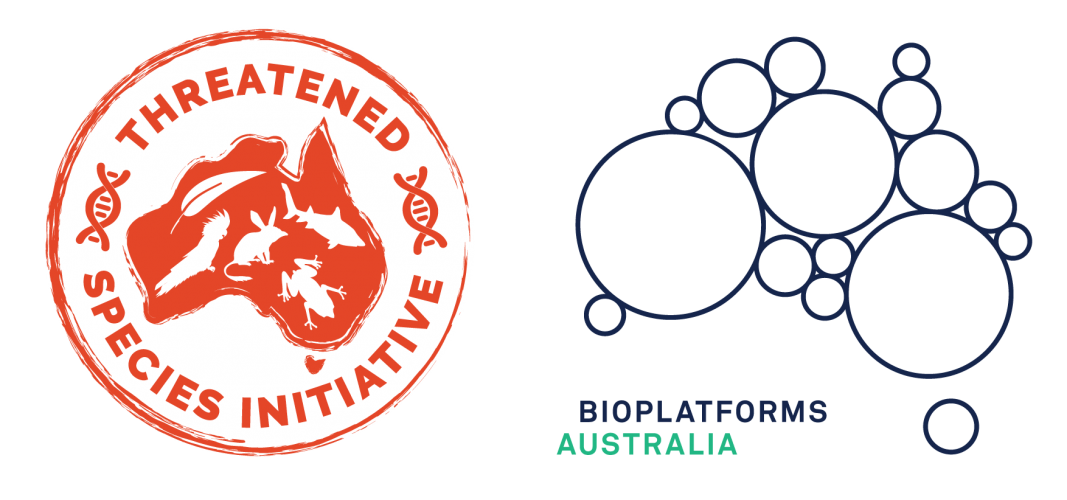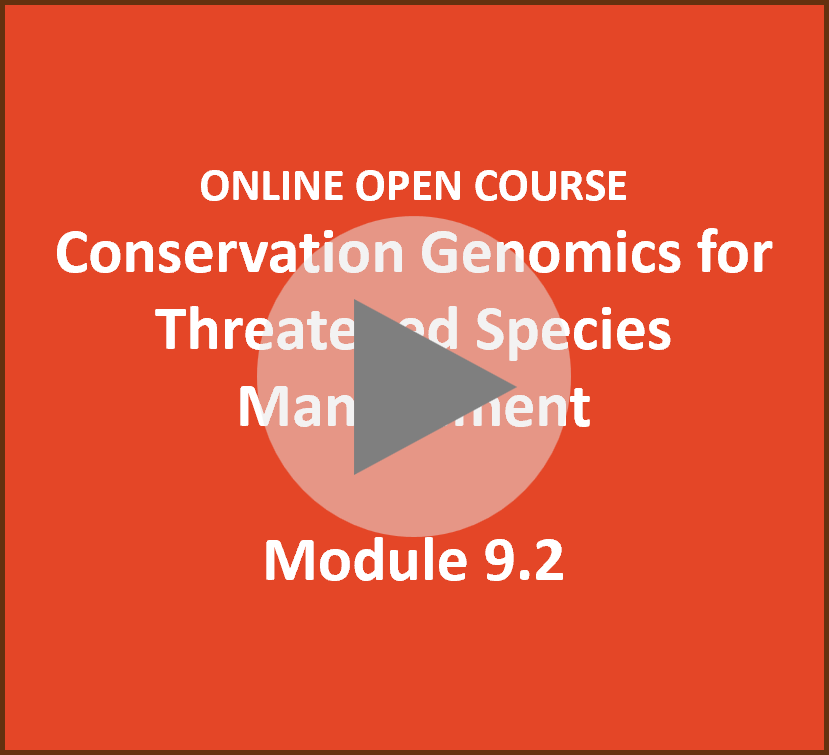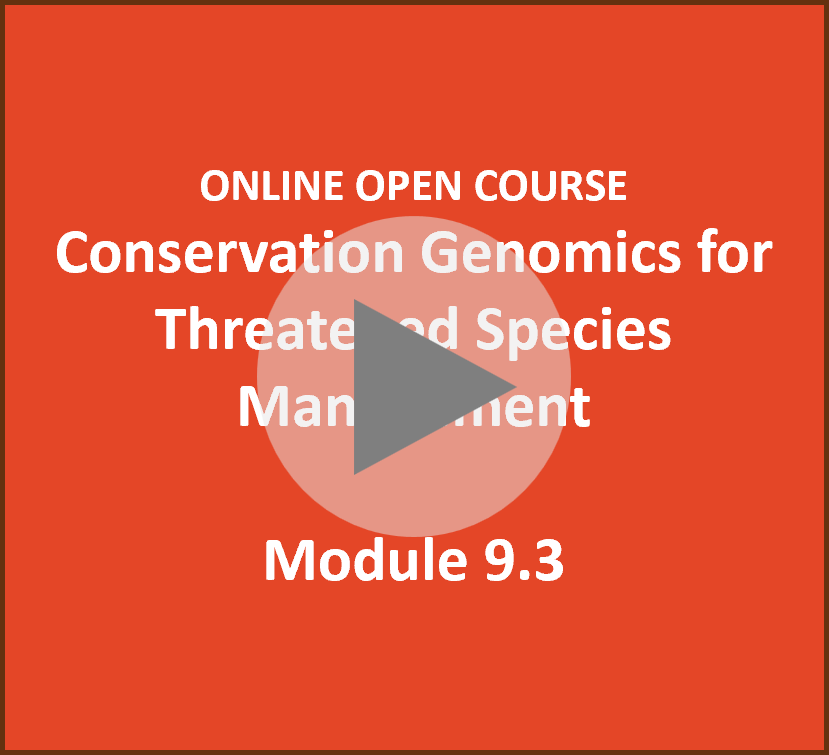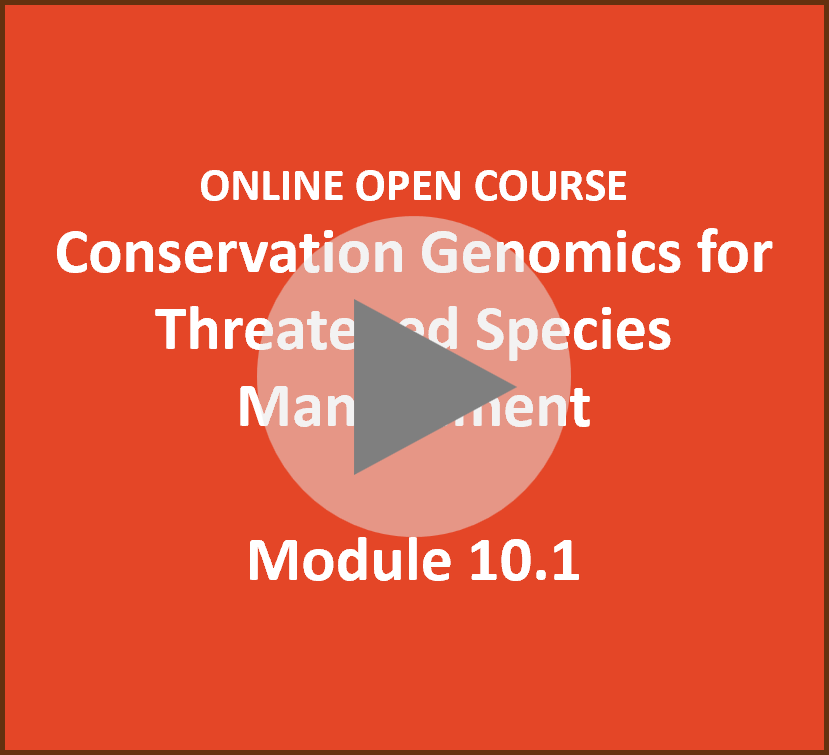Training Modules
Welcome to the Threatened Species Initiative (TSI) open online course: Conservation Genomics for Threatened Species Management. The training modules are presented by a range of Australian conservation geneticists who have generously given their time to assist us in improving genetic literacy and the use of genetic data in conservation management actions.
We hope you enjoy the modules!
These videos have been made available with the assistance of Australian BioCommons.

Our Stars – Find all our presenters in one place: The Presenters Page
Introduction – Threatened Species Initiative

This video provides a short introduction to the TSI, its objectives and why we have developed this online training course and what we hope to achieve.
Presenter: Carolyn Hogg
Module 1 – Principles of Population Genetics
During this module we will explore genetic terms and concepts that are essential for conservation managers to understand. The different videos will provide introductions to genetic markers, genetic diversity, population bottlenecks, reduced gene flow and genetic uniqueness.
1.1 Genetic markers
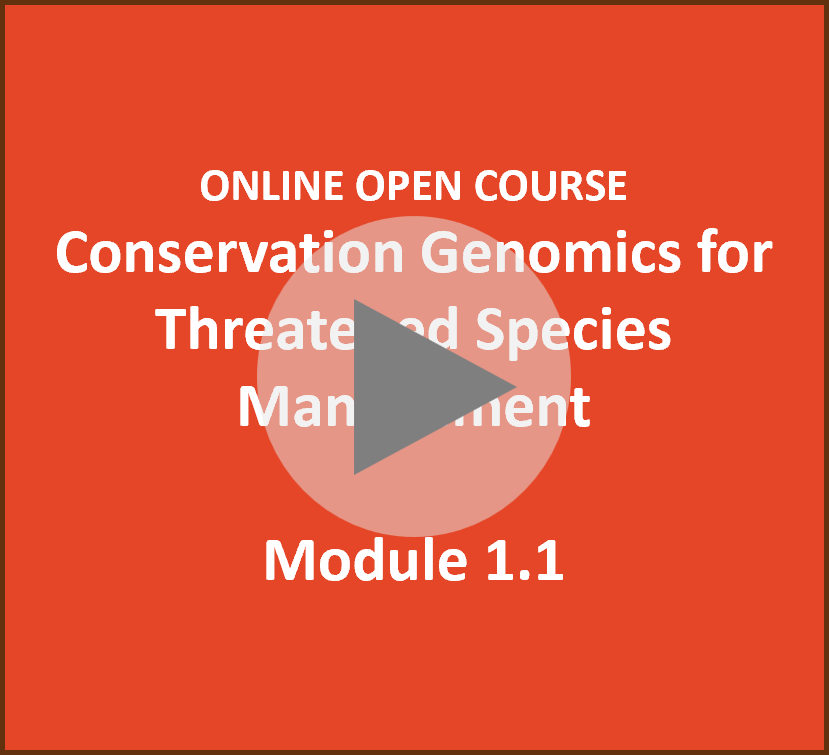
This video will explain the differences between nuclear and organelle genetic information (chloroplast/mitochondria), and the differences between microsatellites versus single nucleotide polymorphisms (SNPs) versus whole genome data.
Presenter: Paul Sunnucks
1.2 What is genomics/genetics?

Here we explain genetic diversity, heterozygosity, inbreeding and allelic richness and why they are important. We also explore the concepts of effective population size.
Presenter: Kate Quigley
1.3 Genetic bottlenecks and reduced gene flow

This video will explain genetic and demographic bottlenecks, as well as inbreeding depression.
We’re working hard to make this video available as soon as possible – Watch this space!
1.4 Restoring gene flow

Here we discuss how to restore gene flow in conservation management settings.
Presenter: Lauren White
1.5 Genetic uniqueness

This video discusses the questions: What is a species and how should they be separated? What should managers consider?
We’re working hard to make this video available as soon as possible – Watch this space!
Module 2 Introduction to Conservation Genetics and Management
This module explores how conservation genetics can inform management decisions and what conservation questions can be answered. We look at the role of conservation genetics in adaptive management frameworks and how the information can be used to inform conservation tools such as translocations and captive breeding.
2.1 Conservation genetics and why it matters to conservation management?
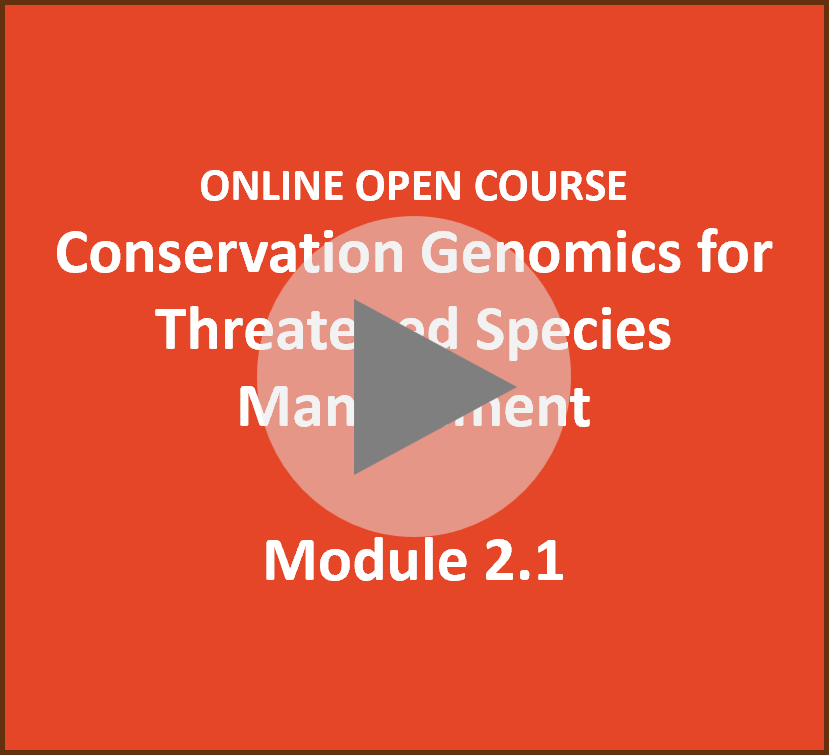
An introduction to conservation genomics/genetics and what role they play in conservation management.
Presenter: Carolyn Hogg
2.2 Decision support and risk assessment
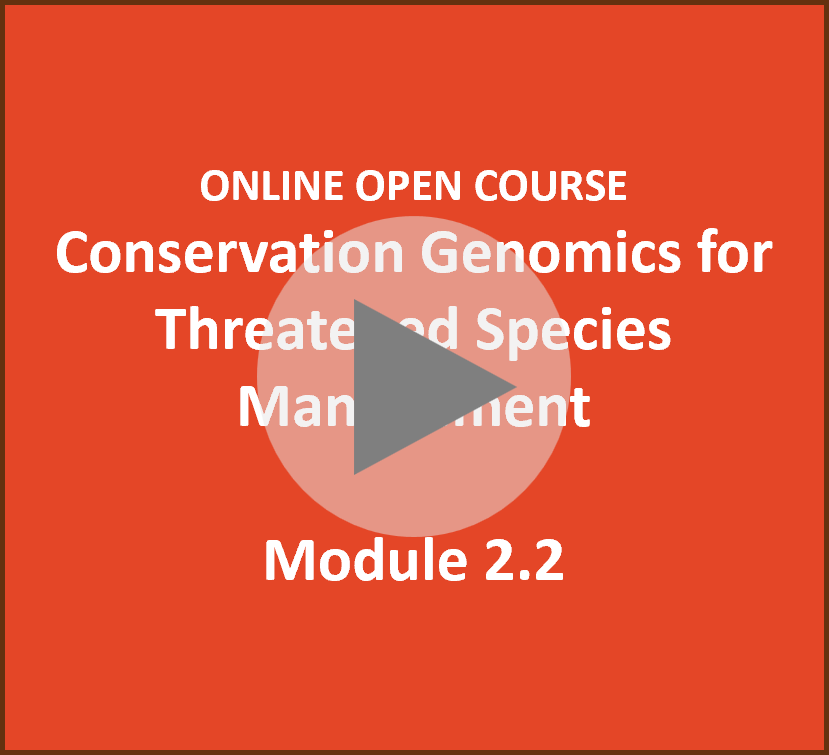
How can conservation genetics be used by managers to conduct operations in adaptive management framework? What tools exist to assist with this?
Presenter: Paul Sunnucks
2.3 Conservation genomics in action – animals

This video explores the role of conservation genetics to inform decision making in several applied management situations such as translocations, captive breeding, and understanding disease. Furthermore, we look at how to detect cryptic species at a continental scale and taxonomic resolution.
We’re working hard to make this video available as soon as possible – Watch this space!
2.4 Conservation genomics in action – plants

This video explores the role of conservation genetics in plant conservation with examples for translocations. Furthermore, we explore how conservation genetics can inform efforts in restoration and connecting landscapes.
Presenters: Chantelle Doyle, Dr Samantha Yap & Enhua Lee
Module 3 Recovery Teams, Conservation Agencies and Community Engagement
The three videos in this module focus on the importance of collaboration between researchers and managers, how to establish networks and different permitting considerations. We look at species-wide programs such as the NSW Saving Our Species program and Restore & Renew.
3.1 Co-design and engagement
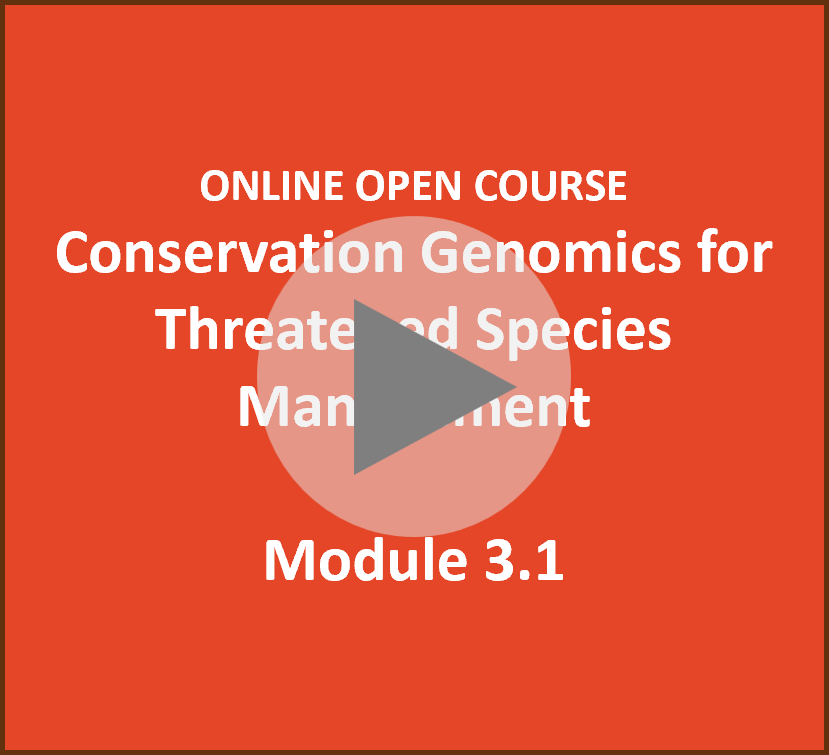
This video explores the benefits of co-designing projects and genetic analyses between academic parties, conservation managers and Indigenous communities. It provides a starting point upon which you can develop your stakeholder engagement.
Presenter: Carolyn Hogg
3.2 Recovery teams and permitting

This video continues on the theme of the importance of establishing networks, including collaboration and engagement with recovery teams, understanding species specific recovery plans/conservation advices, and how genetic data may, or may not, assist in the recovery process..
We’re working hard to make this video available as soon as possible – Watch this space!
3.3 Species-wide genetics and biodiversity assessments

We look at programs such as NSW Restore & Renew and Saving Our Species programs. We explore how to use species-wide population genetics in monitoring and biodiversity assessment.
We’re working hard to make this video available as soon as possible – Watch this space
Module 4 Sample Collection, Storage and Study Design
Videos in this module explore the importance and function of reference genomes and population genetics for vertebrate, invertebrate and plant conservation projects. We look at different sampling methods for genetic material including non-invasive samples, low quality samples and eDNA.
4.1 Reference genomes and population genetics – vertebrates

Here we explore sampling methods for reference genomes (e.g. vouchered specimen, high quality DNA, RNA samples) and SNP datasets (tissue/blood samples) and discuss sample storage requirements for vertebrate species..
We’re working hard to make this video available as soon as possible – Watch this space!
4.2 Reference genomes and population genetics – invertebrates

We explore sampling methods for reference genomes (e.g. vouchered specimen, high quality DNA, RNA samples) and SNP datasets (tissue/blood samples) and discuss sample storage requirements for invertebrate species
Presenter: Kate Quigley
4.3 Reference genomes and population genetics – plants
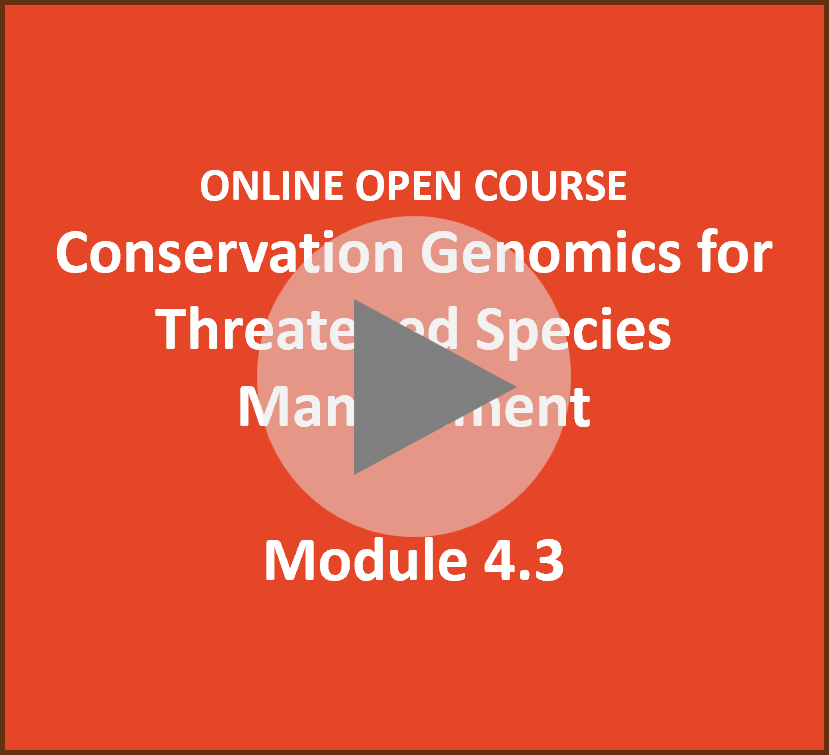
We explore sampling methods for reference genomes (e.g. vouchered specimen, high quality DNA) and SNP datasets (tissue samples) and discuss sample storage requirements for plant species.
Presenter: Chantelle Doyle
4.4 Non-invasive samples and low-quality samples

Many conservation managers wish to use non-invasive samples, here we discuss both non-invasive and low-quality samples, sample storage and the limitations and additional costs that may be involved using these types of samples.
Presenter: Lauren White
4.5 eDNA
4.6 Sampling design for breeding programs/seed banks/biobanks

This video specifically elaborates on sampling methods for captive breeding programs (e.g. founders, relatives) and seed banks/biobanks.
We’re working hard to make this video available as soon as possible – Watch this space!
Module 5 Overview of Conservation Genetics Analysis Pipeline
The two videos in this module will explain genetic data types, SMRT cells, DArT and ddRAD data and SNP arrays. We identify key-steps to create genomic data for conservation and provide an overview over the biggest sequence providers in Australia as of 2023 (AGRF, Ramaciotti, BRF, DArT etc).
5.1 Genetic data types and why are they useful?
5.2 Steps to creating genomic data

We explore the keysteps to creating genomic data: sample collection and storage, DNA extraction and quality check, sequencing, and data filtering. We introduce the four biggest sequence providers in Australia – AGRF, Ramaciotti, BRF and DArT
Presenter: Lauren White
Module 6 Genome Assembly and Annotation
This module provides an overview of genome assembly and annotation, including available tools and methods.
6.1 Genome and organelle assembly

This video explains methods and tools for genome assembly, including genome quality control, transcriptomes, and mitochondrial/chloroplast genomes.
We’re working hard to make this video available as soon as possible – Watch this space!
6.2 Genome annotation

This video explains why genome annotation and publications is important for conservation genomics.
We’re working hard to make this video available as soon as possible – Watch this space!
Module 7 Population Genetic Analysis and Outputs
This is the most technical of our modules. We look at aligning genomes and the impact of filtering on datasets. We then discuss metadata requirements and documenting analysis decisions. We also introduce the TSI biodiversity portal, an online tool to generate standard conservation genetics reports aligned to the genetic reporting requirements under the Convention for Biological Diversity (CBD).
7.1 Calling genetic variants

This video explores genome alignments and the development of a catalogue of reduced representation sequencing (RRS) data for future use.
We’re working hard to make this video available as soon as possible – Watch this space!
7.2 Impact of filtering on datasets

We explain the impact of filtering datasets and commonly used thresholds.
Presenter: Diana Robledo-Ruiz
7.3 Metadata and documenting analysis decisions

This video explains how to document analysis decisions and the importance of metadata for repeated use of the data you generate.
We’re working hard to make this video available as soon as possible – Watch this space!
7.4 TSI Biodiversity Portal

Introducing the TSI Biodiversity Portal: an online tool to generate standard conservation genetics reports aligned to the genetic reporting requirements under the Convention for Biological Diversity (CBD)
We’re working hard to make this video available as soon as possible – Watch this space
Module 8 Conservation Report and TSI Portal Outputs explained
After assembling and aligning the genomes in the previous modules, we now look at important population genetics metrics and the key aspects to look for in reports and outputs
8.1 Conservation genetics report explained

This video explains population genetics modules and metrics such as population structure, genetic diversity, inbreeding and relatedness
We’re working hard to make this video available as soon as possible – Watch this space!
8.2 Key outputs to look out for in the report

Here we explain what are the key aspects to look out for in reports and the reporting requirements against the CBD,
We’re working hard to make this video available as soon as possible – Watch this space!
Module 9 End-to-end case studies – genetics into conservation management
In this module we will introduce a range of Australian conservation projects that have used genetic data during their decision making processes.
9.1 Tasmanian Devil
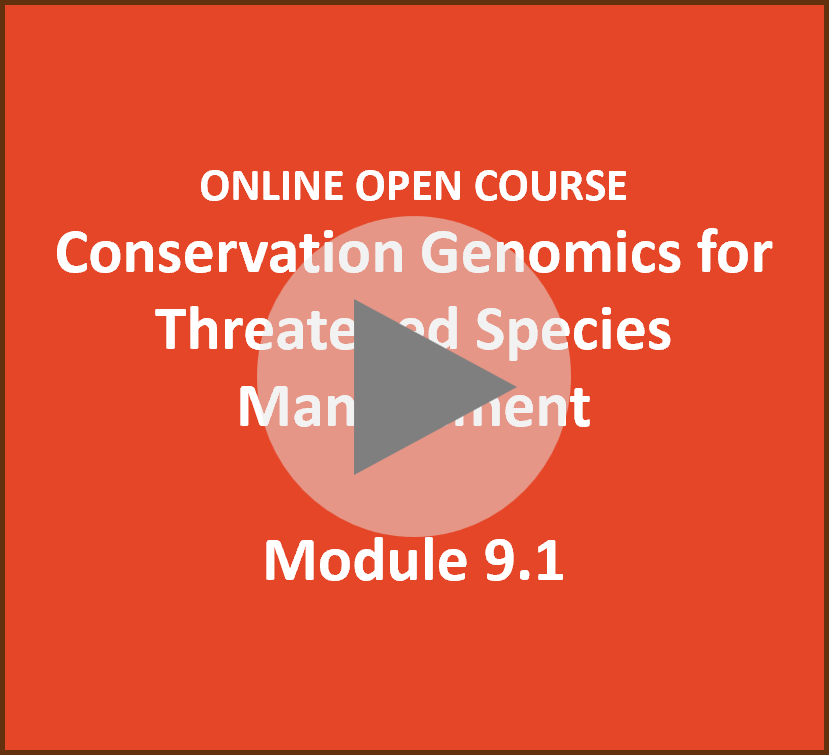
This video provides a case study where genetic data has been used to inform management actions for the Tasmanian Devil
Presenter: Carolyn Hogg
9.2 Christmas Island lizards
9.3 Myrtle rust in scrub stringybark and broad-leaved paperbarks
9.4 Helmeted honeyeater
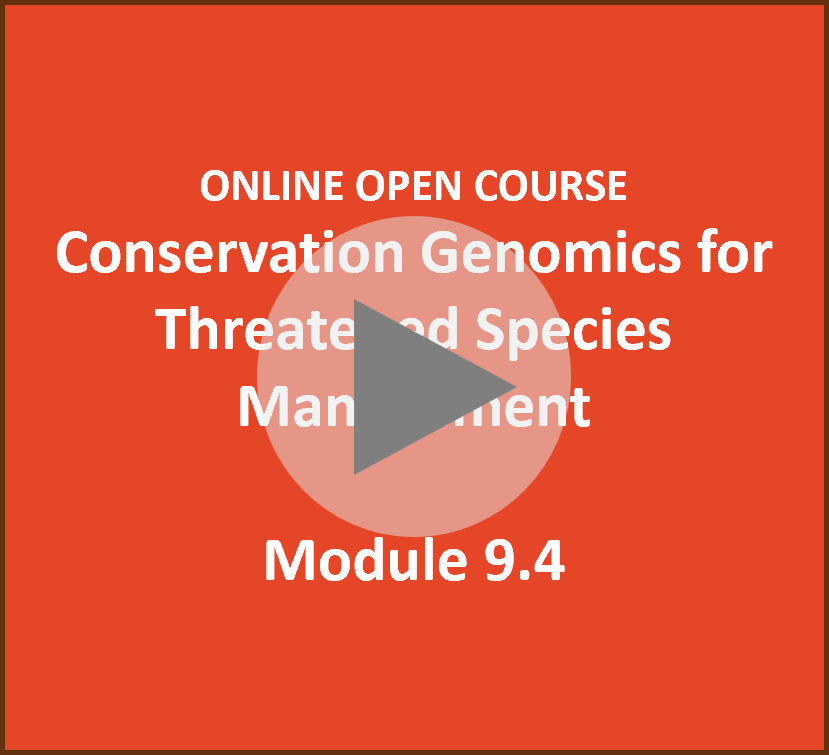
This video provides a case study where genetic data has been used to inform management actions for the Helmeted honeyeater.
Presenter: Diana Robledo-Ruiz
9.5 Macquarie Perch

This video provides a case study where genetic data has been used to inform management actions for the Helmeted honeyeater.
We’re working hard to make this video available as soon as possible – Watch this space!
9.6 Corals

This video provides a case study where genetic data has been used to inform management actions for corals in the Great Barrier Reef.
Presenter: Kate Quigley
9.7 SNP array case study

This video provides a case study where a SNP array was used to inform management actions.
We’re working hard to make this video available as soon as possible – Watch this space!
9.8 eDNA
9.9 Button wrinkelwort

This video provides a case study where genetic data has been used to inform management actions for the Button Wrinklewort.
Presenter: Yael Rodger
Module 10 End-to-end case studies – Genetic into ecology research
This module introduces ecological research projects that have used genetic data to inform their ecological datasets.
10.1 Superb Parrots
10.2 Southern hairy-nosed wombat
10.3 Ghost Bat

This video describes a research project studying Ghost Bats that used genetic data to inform their ecological datasets.
We’re working hard to make this video available as soon as possible – Watch this space
